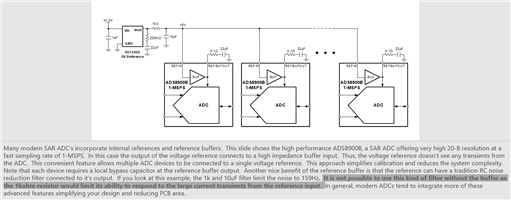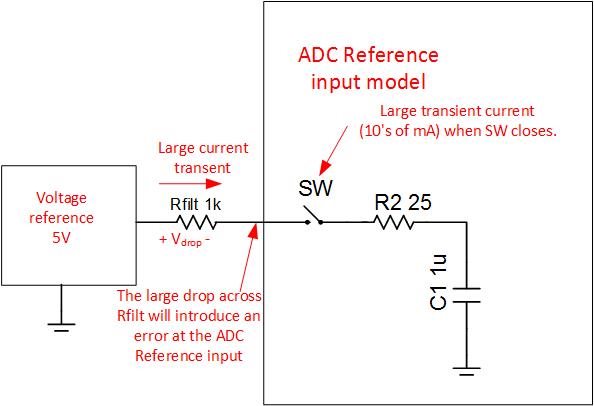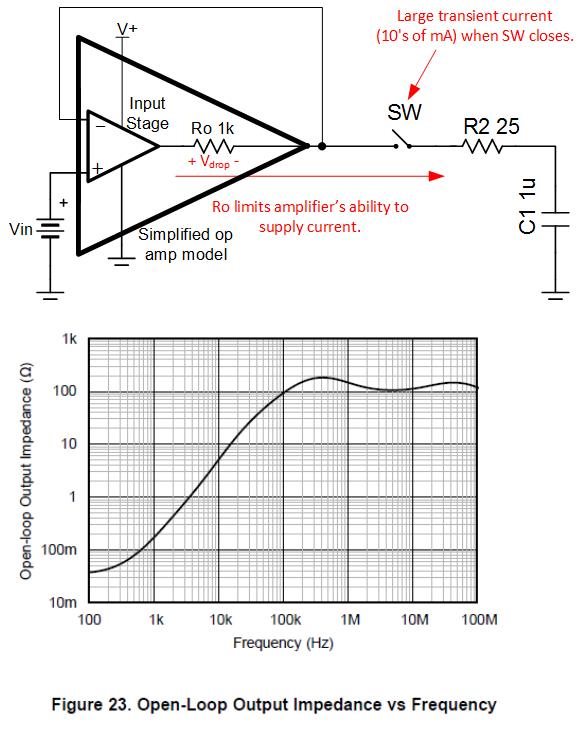Dear TI,
I am having a hard time to ask this question since it is with TI precision lab training - adc and there is only TI precision lab training- opmap. I am studying the TI precision labs-adcs, section 6, 6.2 TI precision labs -adc: overview of reference drive topologies.
On the last page of the PPT, it said " It is not possible to use this kind of filter without the buffer as the 1kohm resistor would limit its ability to respond to the large current transients from the reference input."
My question is why we need a small output impedance to meet the requirement of the large current transients. I understand a small output impedance will increase the driving capability but why we need this small impedance to meet the "fast" transients? Is this related to the output pole of the opamp?
I have an attached a screen-shot of the last page of the PPT as attached.
Thanks,
B. Fan




